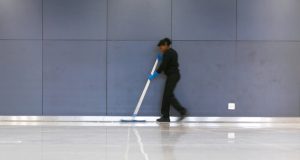 THE CO-HOST OF THE WORKPLACE GEEKS PODCAST VIEW
THE CO-HOST OF THE WORKPLACE GEEKS PODCAST VIEW
CHRIS MORIARTY,
DIRECTOR, CO-FOUNDER AUDIEM
Since the pandemic it feels like every organisation, workplace professional, the whole industry has been looking for a cookie cutter, ‘what’s the plan?’ solution to hybrid/flexible/tele work. Whatever the latest label is for it.
On a recent Workplace Geeks podcast, world renowned academic thinker on this, Nick Bloom explained how prior to the pandemic about five per cent of work took place outside of the corporate workspace, that is now somewhere between 20-30 per cent and has stabilised.
An individual’s workplace experience is a mix of a number of factors that all blend together so just focusing on one element, an attractive space, won’t cut it.
The number one challenge we see in our data, in the context of flexible work, is the location of the site and with that the difficulty of the commute. And in those cases, we often see employees link it to a feeling of stress and an impact on their ability to perform. So, do we think that the right number of meeting rooms, or booths, or a barista is going to reverse that? What if the workspace is award winning but the laptops are too heavy to lug around or the Wi-Fi is patchy?
It’s useful to see how other companies are approaching different challenges but if you simply want to benchmark yourself against faceless companies, each with their own individual contexts then you risk making a stack of mistakes. Instead link what you’re trying to achieve against the broader organisational strategy. For instance, what is the talent pool you’re keen to attract? How do they work? How do you build a workplace strategy that can attract them? So how does your organisational strategy feed your workplace strategy? That’s number one.
If you’re finding parts of work difficult, collaboration for instance, when everyone is remote, rather than force them into the office do what smart working expert Andy Lake advocates and ‘get better
at it’.
But ultimately, look at workplace experience as a broader holistic mix of things. A list of ingredients that you, the chef, have to balance perfectly for your particular audience. Some people will like shiny offices, some will prefer a sense of community, in some places bullet proof Wi-Fi will be mission critical in others it might be proximity to a tube station. Who knows? And speak to your workforce. They’ll know what’s working, what’s not, and they’ll know why. It’s your role to extract that from them to better inform your strategy moving forward. Because I’ll tell you what won’t work, telling them how
to work.




